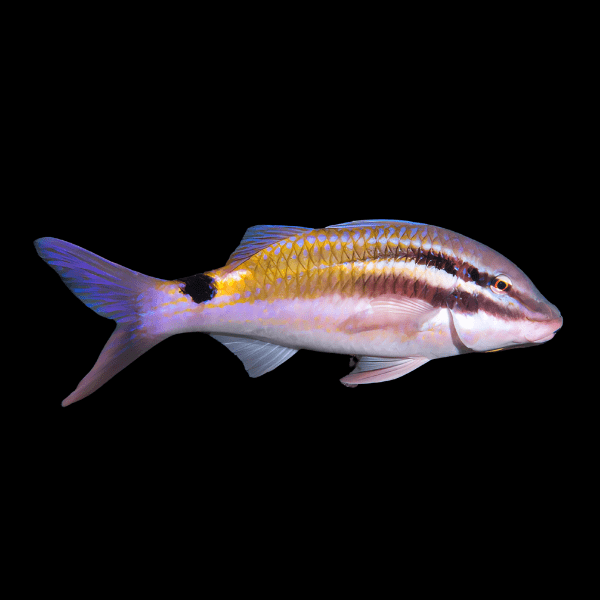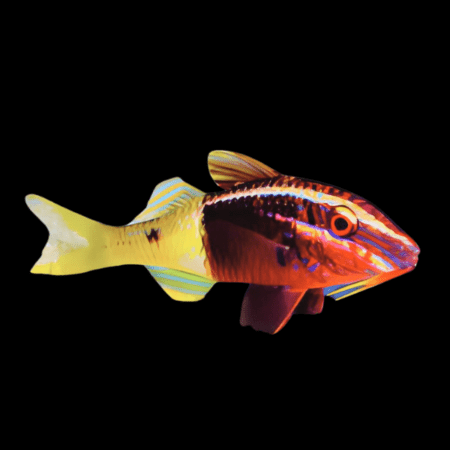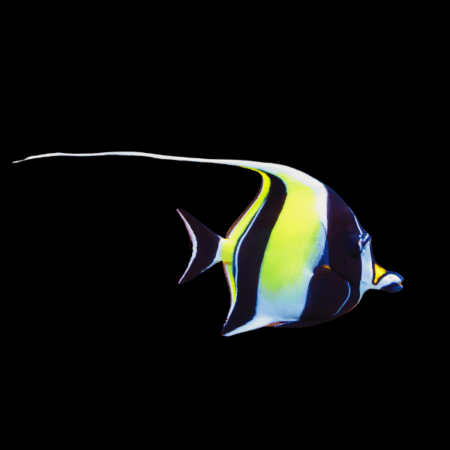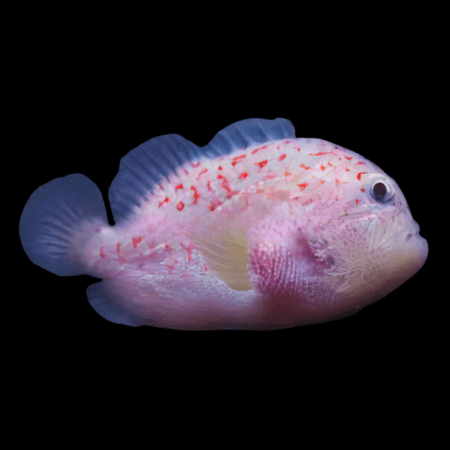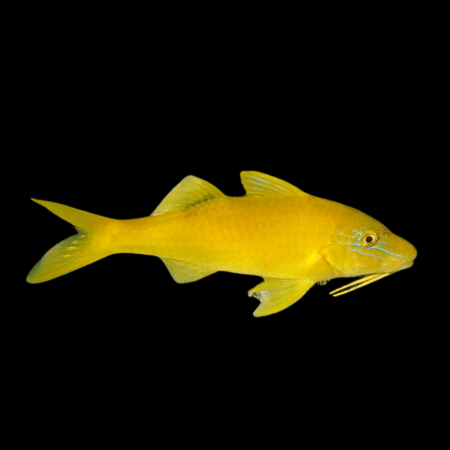Description
Black Spot Sweeper Goat Fish Parupeneus Spilurus
Overview: The Black Spot Sweeper Goat Fish, scientifically known as Parupeneus spilurus, is a distinctive and captivating marine species renowned for its vibrant coloration and dynamic behavior. Characterized by its elongated body, forked tail, and the eponymous black spot on its dorsal fin, this fish is a spectacle in any saltwater aquarium.
Origin: Native to the warm, coral-rich waters of the Western Pacific Ocean, Parupeneus spilurus thrives in environments that replicate their natural reef habitats. They are commonly found grazing over sandy bottoms and coral reefs, from shallow lagoons to deeper waters.
Feeding: A carnivorous species, the Black Spot Sweeper Goat Fish has a varied diet in the wild, feeding on small crustaceans, worms, and other invertebrates. In captivity, they should be offered a mix of meaty foods such as mysis shrimp, brine shrimp, and finely chopped seafood, ensuring a balanced and nutritious diet.
Tank Mates: This species is generally peaceful and can be housed with a wide variety of other reef-compatible fish. However, care should be taken to avoid very small, shrimp-like invertebrates as potential tank mates, as they might be considered prey. Ideal companions include larger invertebrates, peaceful fish of similar size, and non-aggressive species.
Aggression: Parupeneus spilurus exhibits minimal aggression towards other fish, making it a suitable candidate for community tanks. However, it’s important to monitor interactions, especially in smaller aquariums, to prevent potential territorial disputes.
Experience Level: Suitable for intermediate to advanced aquarists, the Black Spot Sweeper Goat Fish requires a well-maintained tank that closely mimics its natural environment. Knowledge of proper feeding regimes and tank conditions is essential for their well-being.
Water Parameters:
- Temperature: 72-78°F (22-26°C)
- pH: 8.1-8.4
- Salinity: 1.020-1.025 SG
- Ammonia/Nitrite: 0 ppm
- Nitrate: <20 ppm
Maintaining stable water conditions and regular water changes are crucial to keeping your Parupeneus spilurus healthy and vibrant.
